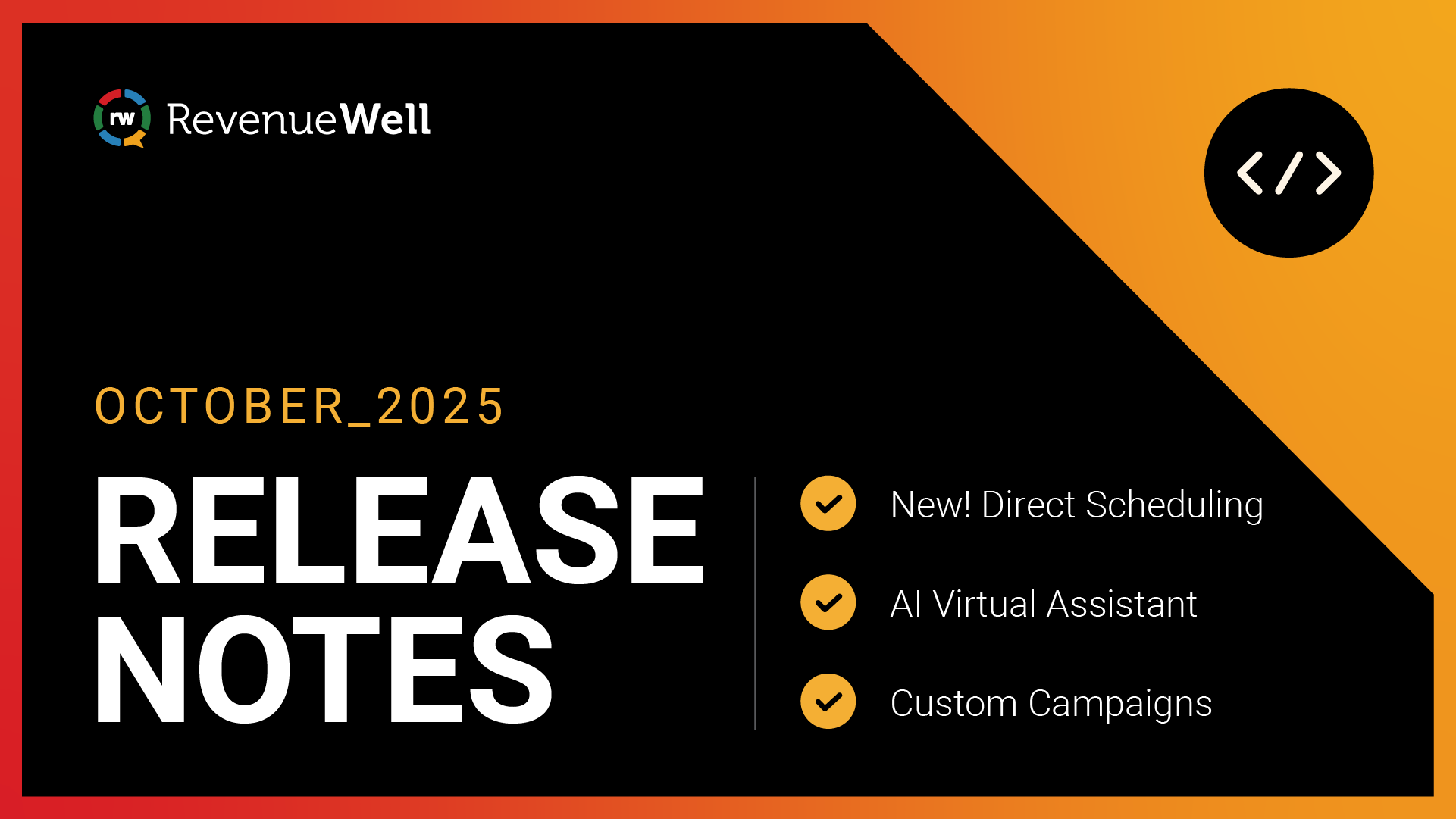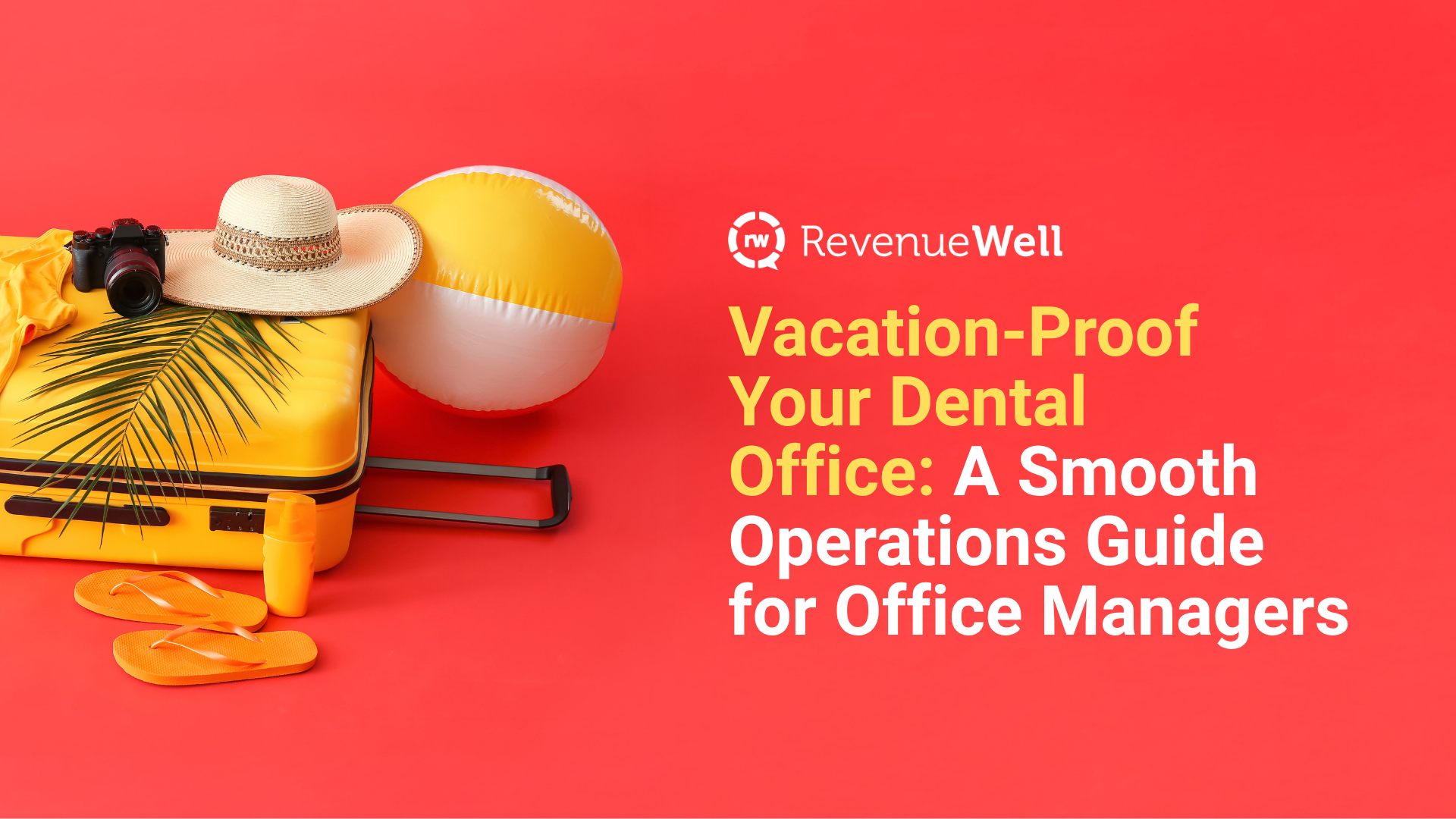Dental Marketing Plan for March: Help Patients Spring Clean Their Smile

We’re introducing a new series where you’ll get a monthly high-level dental marketing plan that you can use to educate and engage with patients and keep a full schedule.
When implementing a dental campaign plan, it’s best to take a multi-channel approach, meaning showing your message multiple times through different channels. For some people, it takes 7 touchpoints to act on a message, so repetition is necessary. We understand that may not be doable depending on your team size. Start with 1-2 of these channels. Doing something is better than doing nothing. You’ve got this!
The first theme? Prepping your smile for spring. Since March is a transitional month when people like to do some spring cleaning in their lives, you can implement this concept in your dental marketing campaigns to encourage patients to schedule their next appointment if they haven’t already.
Let’s get into it.
1. Email Newsletter: Educate and Inspire Patients.
If your practice isn’t sending a dental newsletter, then you’re missing out on an effective way to re-engage patients and get them back on your schedule. Newsletters have been around for a long time now, and they’re a popular way to connect with patients. 90% of Americans admit to being subscribed to at least one newsletter. And the top reasons for subscribing to newsletters include receiving discounts, getting up to speed on current news, and learning more about something that interests them. Now you might be thinking ‘why would someone subscribe to a dental newsletter?’ If your content is educational and relevant, then you’ll find an audience that will engage with your content. You have to experiment with what could resonate with them.
Here's what to consider when building a newsletter:
Newsletter goal(s): Educate patients and position your practice as their go-to resource for healthier smiles. Drive more appointment bookings.
Audience: Active and inactive adult patients within the last 12 months
Cadence: You can choose monthly, quarterly, or even bi-annual.
Here are some content ideas:
- How to “spring clean” your smile: A fresh season calls for fresh oral health habits! Share easy tips for maintaining a bright, healthy smile. Encourage patients to replace their toothbrush, try a new mouthwash, and check if they’re using the right toothpaste for their needs.
- Teeth whitening FAQs: Many patients are curious about whitening but aren’t sure where to start. Guide them toward safe, effective options.
- FAQs about teeth whitening: Address common patient questions and bust myths about professional whitening treatments.
- What to know about home teeth whitening: Over the counter (OTC) whitening kits are popular, but do they really work? Educate patients on the pros, cons, and what to look for.
You don’t have to use all these ideas. A good rule of thumb for dental newsletters is to include 1-2 educational pieces, a promotion if applicable, and office updates that impact patients. Don’t forget the call-to-action (CTA) button to schedule an appointment.
2. Social Media: Boost Awareness & Engagement.
Next up is focusing on your social media content. Depending on your patient base and who your ideal prospective patients are, social media is another way to increase brand awareness, show off your practice personality if you’re comfortable with it, and drive appointments. It’s also one of the ways people learn more about their health. In fact, around 90% of Americans use social media platforms for health information. It’s worth acknowledging that seeking health information via social media has its drawbacks, like the spread of misinformation and receiving the wrong diagnosis, but look at it from this perspective: If your practice has been sharing credible health information and showing a more human side, then prospective patients are more likely to turn to you for their oral health information instead of a random person who had a similar issue with no dental background.
Goal(s): Boost awareness, increase engagement, and build your practice’s reputation as a go-to source for dental health.
Audience: All (public)
Channels: This is up to you. Post on the channels you’re on, your patients are on, and specifically the ones where you get engagement. If you only have time to post on one channel, then start with that. It’s better than not posting at all.
How often should you post: It depends on the channel and requires some testing. For example, if you have Instagram, the minimum should be 3 posts per week. And this should be a combination of static posts, reels, stories, etc. This increases your chances of being seen.
Here are some social media post ideas:
- Dental Assistant Recognition Week (March 3-9): Celebrate your amazing team! Share behind-the-scenes moments and shout out your hardworking dental assistants.
- National Dentist’s Day (March 6): Introduce your doctors, highlight their expertise, and show appreciation for their dedication.
- Promotion of online reviews: Patients trust real feedback. Encourage happy patients to leave a review and showcase the ones you already have!
- Video office tour: Give potential new patients a virtual look at your welcoming practice to build trust and familiarity. This is also a good way to put any nervous patients at ease.
- Dental tip of the week: Quick, engaging tips keep your audience coming back for more. Topics like “How often should you replace your toothbrush?” work great.
- How the teeth whitening process works (video): A short, engaging video explaining the step-by-step process can encourage more patients to book.
- What’s hiding in your toothbrush (video): Share surprising facts about bacteria buildup on old toothbrushes and when to replace them.
- Spring cleaning challenge: Challenge patients to commit to 30 days of better oral habits (e.g., floss daily, drink more water, limit sugary drinks).
3. Email Promotion: Fill Your Schedule with Whitening Appointments.
Last but certainly not least is email. It’s still a reliable way to get patients back on the schedule. According to Constant Contact, 55% of consumers prefer to use email when communicating with businesses. Your practice is a business and that includes marketing it to maintain a full schedule. And email is one way to acquire and retain patients over time.
Audience: Active and inactive adult patients without existing dental conditions.
Goal: Schedule visits and increase production with high-value whitening treatments.
Here’s what to send:
- Teeth whitening special offer: Many patients want a brighter smile but need a nudge to schedule. Promote a limited time offer or highlight the benefits of professional whitening. You can lean into the idea of self-care and helping people enhance their smiles, so they feel their best.
Stay tuned for April’s plan. We also have a ready-made 12-month dental content calendar that your practice can use to start building out your campaign schedule for the rest of the year.




